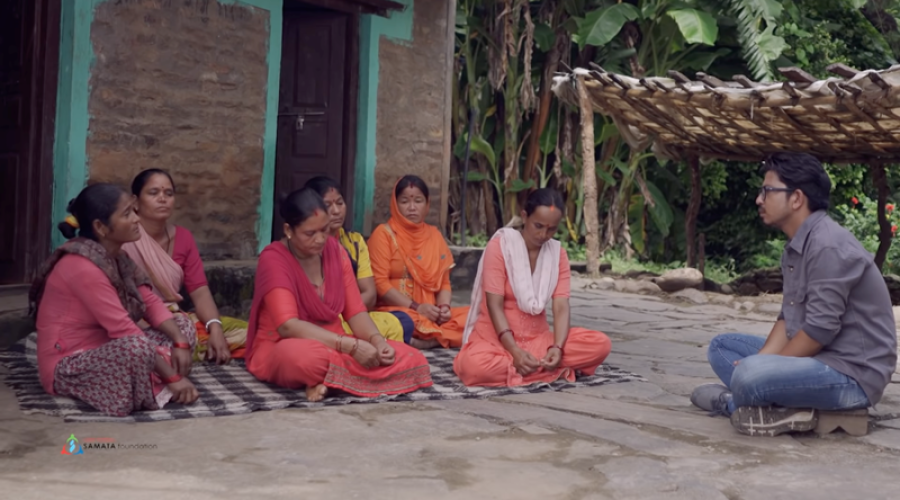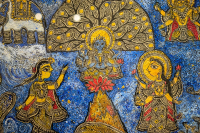Culture & Lifestyle
Season 2 of ‘Jaat Ko Prashna’ highlights the ills of the caste system
At the heart of the recently released show are the voices of those impacted by caste-based discrimination and violence.
Pinki Sris Rana
Last year on May 23, when the whole country was under a nationwide lockdown, the distressing news of a mass lynching in Rukum (West) made headlines.
In the incident, Nawaraj BK and his five friends, Sanjiv BK, Ganesh Buda Magar, Lokendra Sunar, Tikaram Nepali, and Govinda Shahi were brutally murdered for their involvement in attempting to help Nawaraj elope with an ‘upper-caste’ Shahi girl. Among the six boys, four belonged to a so-called ‘lower caste’ community. The incident, which was widely reported, shook the entire country and reminded people that caste-based violence is still a quotidian social reality for many.
"This news of lynching left me disturbed for quite some time," says Pradip Pariyar, the executive chairperson of Samata Foundation, an organisation that advocates for the rights of marginalised communities. It was the Rukum lynching incident that served as a catalyst for the foundation to come up with and produce the television show 'Jaat Ko Prashna’, which discusses Nepal's caste system and the violence and discrimination committed in the name of caste.
The first episode of the show, which premiered on August 2, 2020, explored Ajit Dhakal Mijar's case. On July 9, 2016, Ajit, a Dalit and a resident of Kavre, had married his ‘upper-caste’ girlfriend. The girl’s family objected to the marriage and separated the couple. A few days later, on July 14, Mijar’s dead body was found hanging in Dhading, more than 200 km away from his home district. A post mortem report stated that the death was not caused by hanging. Since then, Ajit’s family members have alleged that he was murdered.
In the episode, Ajit’s parents share their frustration of having to come to Kathmandu numerous times only to be met with complacency from the government, and consistent failure of the authorities who were supposed to detain the perpetrators. The parents claim that they have been denied justice on the sole basis of them being Dalits.
As a sign of protest, the family has refused to take back Ajit’s corpse until the authorities arrest the people responsible for the killing.
Ajit’s case is one of the few caste-based violence and discriminations cases the first season of the show covered. The majority of the season’s episodes were interviews with influential individuals, including former prime ministers, federal ministers, and provincial chief ministers.
“The idea with the Season 1 of ‘Jaat Ko Prashna’ was to bring stories from various communities across the country, but due to the travel restrictions that were in place at the time, we were left with no option but to conduct interviews with various personalities on what they thought about caste-based discrimination and violence which, despite being illegal, is still rampant in the country,” says Pariyar.
As the severity of the pandemic started easing in 2021, Samata Foundation started working on season 2 of ‘Jaat Ko Prashna’.
This time, the makers of the show travelled across the country to collect stories of caste-based discrimination and violence as well as give victims and their families a platform to share their experiences to have their voices heard.
Unlike the first season, which was hosted entirely by Rajesh Hamal, the second season has multiple hosts, which include Hamal, Dayahang Rai, Prakash Saput, Mohna Ansari, and Nishma Dhungana Choudhary.
The first episode of the second season also opens with Ajit’s case. Viewers learn that despite the spotlight the case received after it was covered by the show last year, there has still been no legal development. Viewers see that Ajit’s parents are still hurt and angry that the government has been unable to land the perpetrators behind bars. But unlike in the previous season, his parents appear less hopeful that the authorities will ever catch the perpetrators this time.
This definitely raises a few questions about the show's purpose and effectiveness. Is the show only limited to initiating conversations around caste-based discrimination and violence, or should it also be able to bring forth tangible results on such cases where justice has still not been served?
The show’s director, Shanta Nepali, agrees that it is frustrating to see Ajit’s family still having to wait for justice despite all the media attention the case has received over the years.
“But just because we aren’t seeing tangible impact doesn’t mean we now sit back and do nothing. We have to be relentless in our effort to bring forth such stories and keep giving victims a platform to share their voice and make the general audience and authorities aware of the atrocities that are still being committed in our society in the name of caste,” shares Nepali.
One of the show's researchers, Sulochana Panchakoti, says, "In the second season of the show, we have tried to bring stories that have not gotten much attention in the mainstream media. We have also tried to dive deep into these stories and cover them with the sensitivity they require. If you look at Nirmala Paharai's case [covered in the fourth episode], she was a journalist herself, but when she was killed, not a single newspaper covered her story."
So far, eight episodes of season 2 have already been aired, and each episode has covered two to three cases of caste-based injustices. At the heart of every episode are the direct and indirect victims of the cases. They recount the struggle they continue to face while seeking justice. Episode four, hosted by Prakash Saput, a singer, covers the cases of Rukum mass lynching and Nirmala Paharai's mysterious death.
In the episode, the mothers of the murdered boys speak about the incident and share how they found their dead bodies more than a week after the killing. One of the mothers expresses anger over the media's coverage of the incident. She says that all the media attention the case has received has not resulted in any impact and that this has only made it more challenging for the deceased families to heal emotionally.
It is a deeply moving episode that puts the spotlight on the victims’ family members. Getting people to open up about such tragic personal losses is by no means an easy task, and the makers of the show deserve credit for covering such cases with the utmost sensitivity.
"With every story that we have covered for this season, our priority has always been to first gain the trust of the people whose stories we hoped to cover and we have tried to understand their experiences on a very human level. Only after we have done that, we started taking out our cameras and capturing their stories,” says Nepali. “Since I also come from the same community, I could connect with them and help them to open up and share their deeply personal stories of loss and grief with our team.”
Another commendable aspect of this season is the maker's decision to interview the victims in their homes, villages, and towns. This takes viewers to parts of Nepal that one seldom gets to see in mainstream media. It offers viewers a deeper insight into the lives of the people featured, which is much more challenging production-wise than shooting in studios.
While those who have spent all their lives in Kathmandu or have not experienced caste-based discrimination might be shocked by the stories that season two of ‘Jaat Ko Prashna’ covers, others might be tempted to regard such stories as one-off incidents. But Nepali begs to differ. “The show represents the reality of countless people outside of Kathmandu Valley. If you are curious enough, the moment you step out of the bubble of the capital city, you will see that such stories and incidents are more prevalent than we might think. This is why we need to bring forth these cases to make people aware of what's happening and acknowledge this ugly aspect of our society and start doing something to improve things."




 9.12°C Kathmandu
9.12°C Kathmandu















